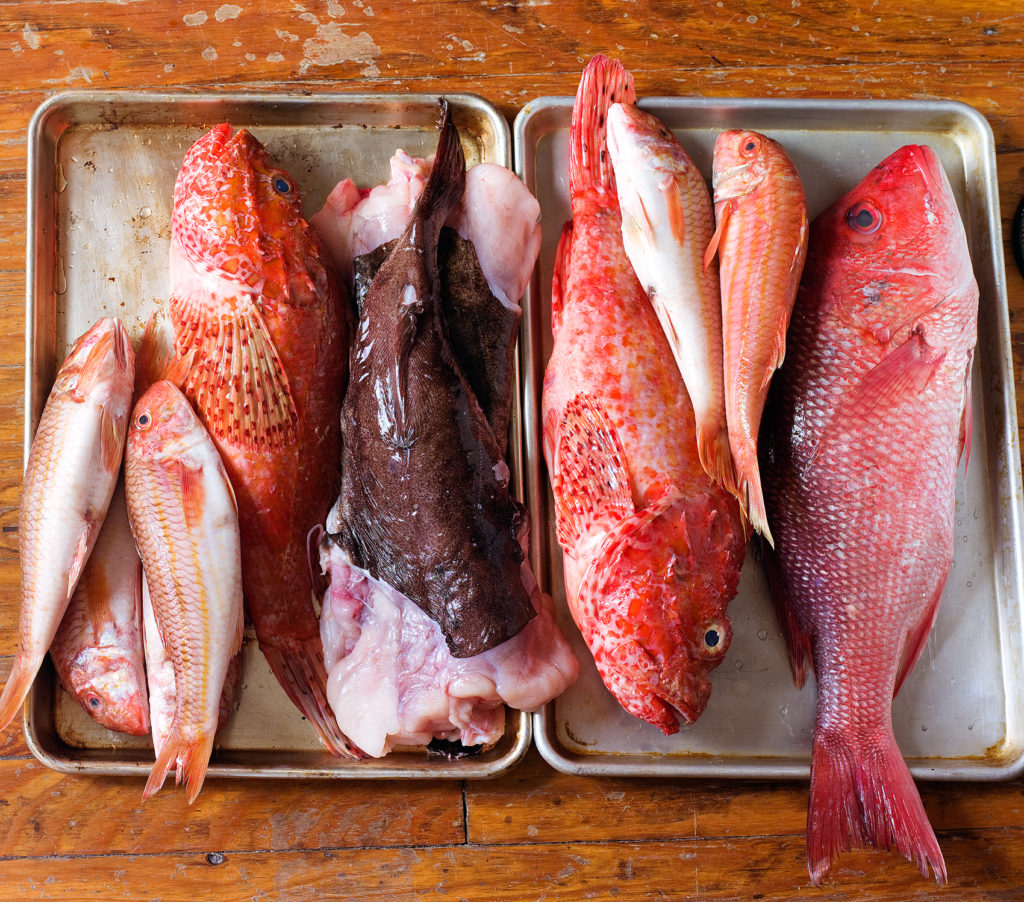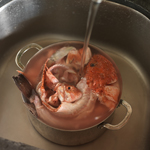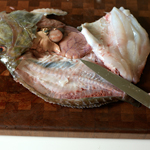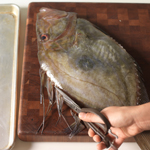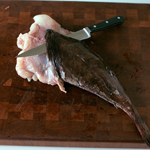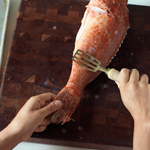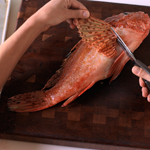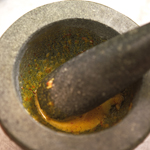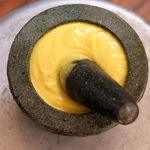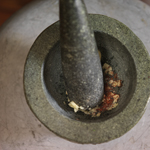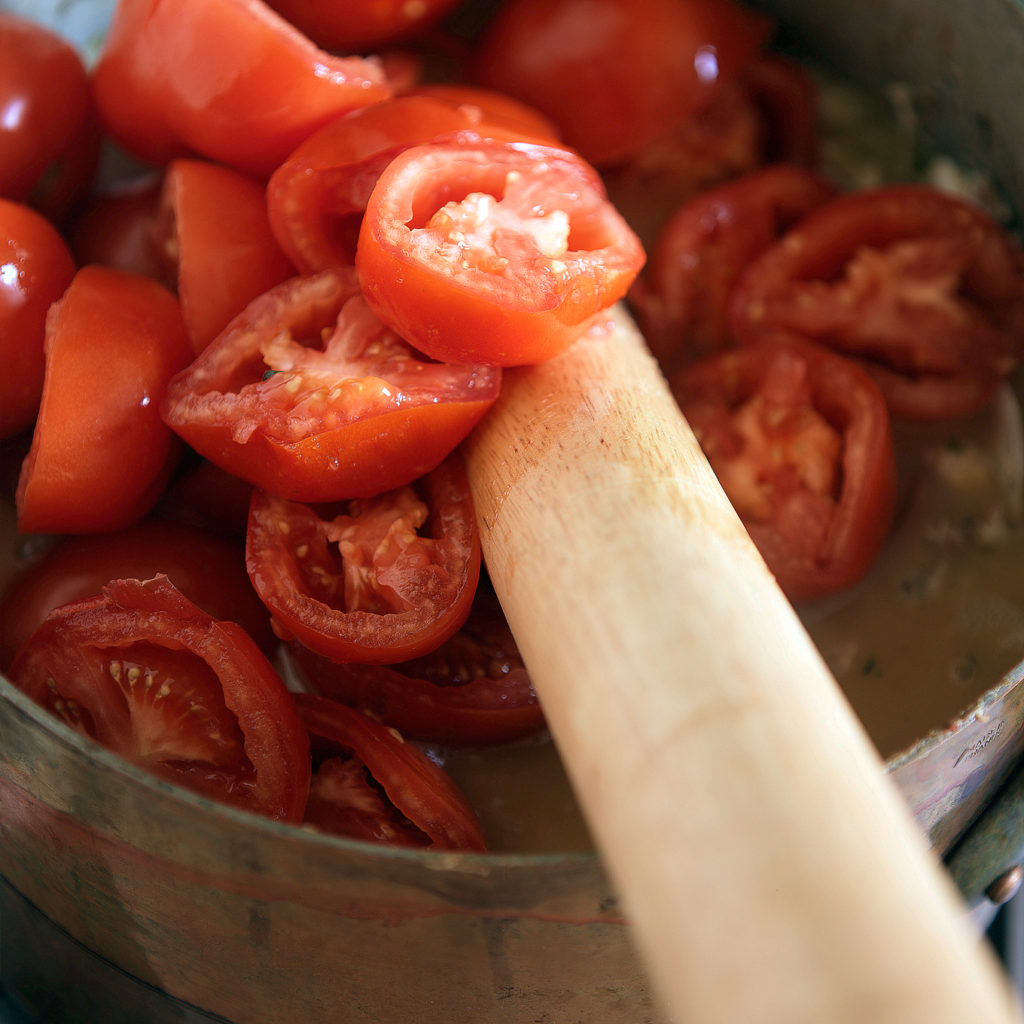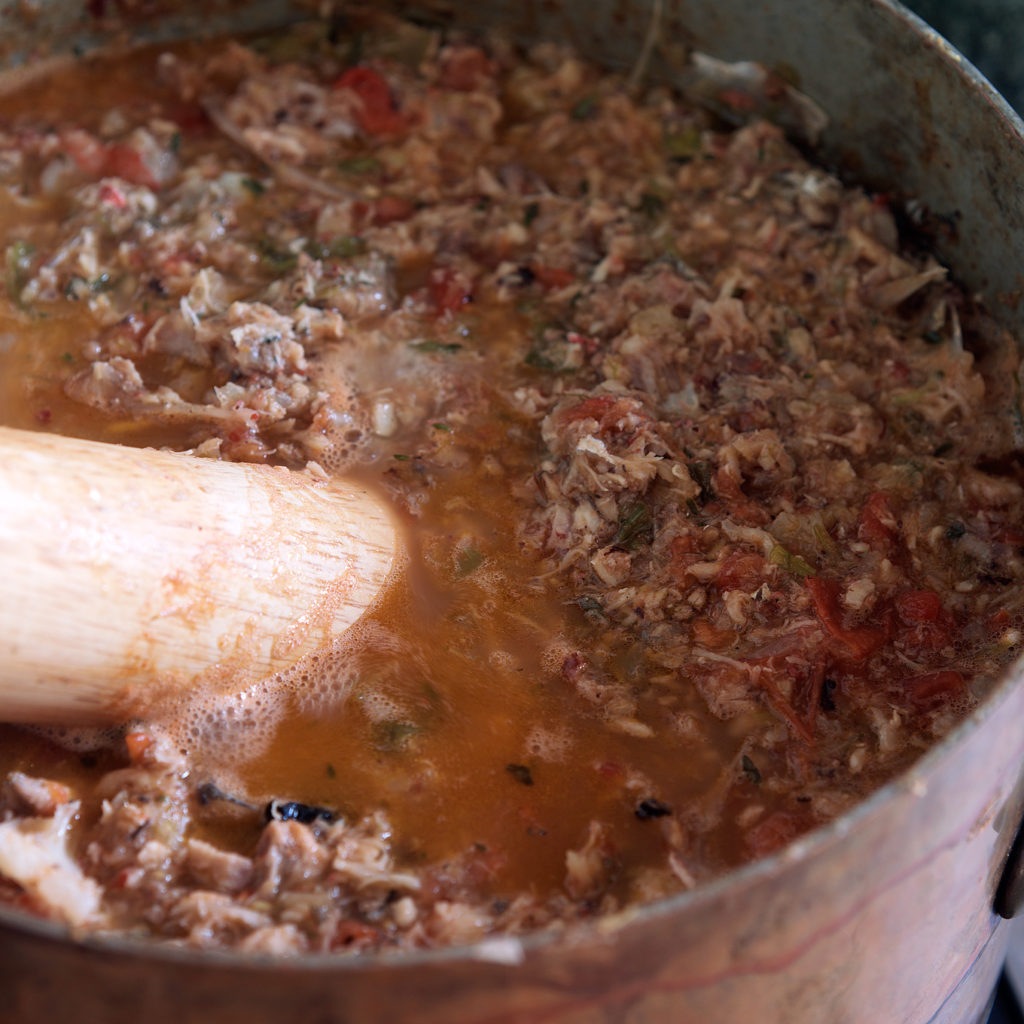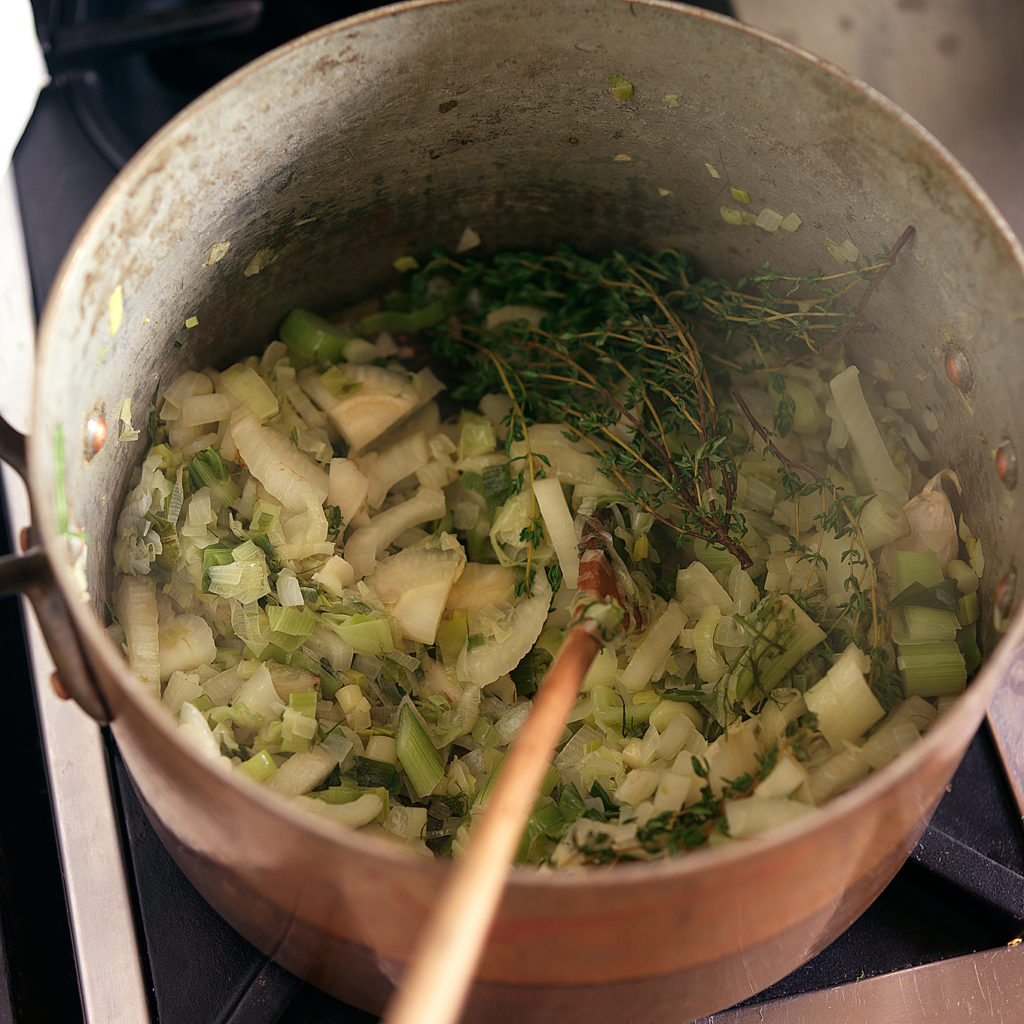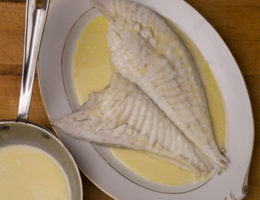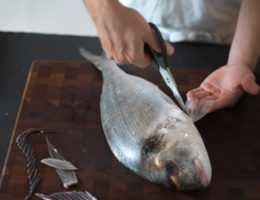No dish, except for perhaps cassoulet, French onion soup, or salade niçoise, invites so much polemic as bouillabaisse.
Bouillabaisse aficionados range from the ultra-conservative (bouillabaisse can only be made feet from the Mediterranean using only seven varieties of fish) to relatively liberal (bouillabaisse can be made in Paris with more varieties allowed). No one, at least no French person, would concede that bouillabaisse can be made far away from the Mediterranean, much less outside of France.
After awhile these arguments become silly because it becomes simply a matter of where you draw the line. If you insist on the traditional seven Mediterranean fish, then bouillabaisse in Georgia is pretty much out, barring drastic measures involving airplanes. If, however, you make your soup following certain principles, you may not end up with bouillabaisse that tastes like it was made in Marseilles, but you will have a more than acceptable fish soup/stew albeit one made with local fish.
The important thing is to understand the principles. In its most basic form, bouillabaisse consists of a collection of fish boiled up with fennel and saffron and served, broth first, followed by whole fish. The broth is thickened and flavored with a rouille sauce, a deep red sauce made with peppers and sometimes saffron.
The concept of thickening a broth with a sauce is a common one around the Mediterranean. A bourride is a fish soup, also from the south of France, made with fewer fish (often monkfish), and the sauce thickened with aioli; a romesco is a fish stew thickened with a garlic sauce thickened with nuts; and of course there is soupe de poisson niçoise which is a fish soup thickened with the pureed fish.
While a traditional bouillabaisse consists of whole fish, unless you carve them at the table (a laborious chore for a crowd), you’ll find that most people don’t know what to do with them. A better work around, and one that will give you a tastier broth, consists of fileting the fish and using the bones and heads to reinforce the flavor of the basic broth. The filets can then be poached in the broth just minutes before serving and the broth thickened at the last minute.
This last method is far more efficient and makes the soup much easier to eat. There is, however, one idiosyncrasy. When the filets get hot, the skin contracts and causes the filets to curl. Of course you can skin the filets but the effect of the often beautiful fish will be lost.
To avoid the curling problem, pre-sauté the filets, skin-side down for about 30 seconds to cook the skin. Heat a small amount of olive oil in a non-stick pan until it smokes. Place a filet or two in the pan, skin-side down, and press down on it with the back of a spatula to keep it from curling. Continue in this way until you’ve worked through all the filets. Keep the filets in the refrigerator (don’t stack them up on each other or they’ll cook) until you’re ready to serve.
Ideally, of course, the broth would start out as a fish broth made from the bones and heads of other fish (in Provence they sell miniature fish for this purpose) and then get its flavor reinforced by using it to simmer the heads and bones of the fish going into the soup. It helps to use a variety of fish.
Since I live on the Atlantic side of the United States, I may use striped bass, black bass, black fish, cod, red snapper, grouper (remove the skin from grouper filets), red mullet (if I can find it), or bronzino. While variety is of vital importance, it isn’t as important as freshness. So if you have a limited number of very fresh fish, it’s best to stick with them rather than trying to introduce additional fish that mightn’t be in the same pristine condition.
Recipes and suggestions for the traditional rouille sauce vary from village to village and from cook to cook. Most contain some kind of red pepper, either dry or fresh, and often a red bell pepper, probably to contribute color more than anything else. The most traditional recipes are thickened only with breadcrumbs but more “modern” recipes contain potatoes (probably just since the 19th century) or even egg yolks which turn the rouille into a mayonnaise. There’s no problem with this except that the soup, once combined with the sauce, mustn’t boil or the egg yolks will curdle. Some versions of rouille contain saffron. My own version varies according to what I find at the market, but invariably contains fresh breadcrumbs (dried breadcrumbs will remain gritty), a grilled bell pepper (peeled, seeded, etc.), a couple of raw garlic cloves, saffron, and some of the broth from the soup to get the whole thing to turn around in a food processor. I work in olive oil, with a wooden spoon, not in a food processor which makes it bitter.
Makes your basic broth with fish heads and bones or, if you’re lucky, cleaned whole fish, some sliced fennel (the branch is fine), tomatoes, an orange zest, and a few tablespoons of olive oil. In classic cooking, you would gently simmer the broth, skimming off fat and froth. But when making bouillabaisse, the purpose is to emulsify the oil with the broth so that it acts as a sort of liaison. So boil away until everything falls apart, strain, and use this broth for poaching your fish. At this point, some cooks add potato slices, but I usually abstain.
When you’re ready to serve, spread your pre-sautéed filets, skin-side up, in a wide frying pan. Pour in enough broth to cover, simmer gently for a minute on up, (don’t boil here or you’ll end up with a pile of fish flesh) leaving the filets a tad undercooked since they continue to cook once served. Transfer the filets to heated soup plates and pour the poaching liquid into some of the reserved rouille sauce. Pour this mixture into the rest of the broth and bring to the simmer (unless you’ve added an egg yolk). Ladle around the fish.
I like to serve my finished bouillabaisse in soup plates with the fish filets and broth served at the same time. Other fish stews and soups are made following similar principles, just using different ingredients. To better help you understand how fish soups and stews work, I quote from my book, Glorious French Food: “Every region of France has its own fish soup or stew. The main differences, except for varieties of fish, are in the ingredients used to make the basic broth and the flavorful finishes sometimes added at the end. Again, the difference between a soup and a stew is simply a matter of the ratio of liquid to solid, less liquid being used to moisten a stew. To follow the continuum even further, a piece of fish with a concentrated sauce based on its head and bones is prepared in the same way as a fish soup or stew except that the liquid is highly reduced and perhaps finished, in the way of a sauce, with a little butter, cream, or beurre manié.”
Southern French fish soups and stews, bouillabaisse being the star, are among the most interesting, primarily because Mediterranean fish taste so good and because of the natural affinity of fish for other Mediterranean ingredients such as garlic, fennel, saffron, wild thyme, oregano, and tomatoes. The bourride is probably the best known of bouillabaisse alternatives and is made in much the same way without aspiring to the same level of luxury, since it includes a smaller variety of fish. But the real genius behind the dish lies in the fact that the broth is whisked into an aioli containing some extra egg yolks, and the broth is cooked gently on the stove—like the seafood equivalent of a crème anglaise—until the garlicky broth turns silky smooth. A bourride sètoise is a similar concoction except that the aioli contains pureed monkfish liver. Because monkfish are bottom feeders and toxins accumulate in the liver, this is a delicacy I avoid. A soup de poisson marsellaise is a fish soup that has been pureed through a food mill so that all the flavor is extracted from the fish but enough of the finely divided flesh works through to give the soup some body. The soup contains no solid pieces of fish, unless of course as a refinement one were to poach pieces of fish in it or use it as the base for a bouillabaisse. An oursinade is a kind of bouride except that the broth is finished with egg yolks and sea urchin roe.
On the Atlantic coast, the Basques make a soup, ttoro, similar in concept to a bouillabaisse but with a completely different flavor. In addition to plenty of garlic and tomatoes, ttoro is spiced up with hot pepper and contains shrimp and mussels, and often clams. To the north, the Bretons and Normans have their own fish soups and stews, often called “matelotes.” While the word matelote is used all over France to mean fish stew, virtually every region has its own variations. Matelote à la normande, from Normandy, is made with saltwater fish and cider, but most matelotes are made with freshwater fish and red or white wine. A typical matelote is a rather slapdash affair made by heaping aromatic vegetables—the usual onions and carrots—in a pot with chunks of eel, perch, or carp; pouring in the wine; simmering or even boiling until the fish is cooked; and thickening the liquid with beurre manié (flour and butter paste). Many versions are garnished the same way as for a boeuf bourguignonne—with pearl onions, mushrooms, and little strips of bacon. Heart-shaped croutons, their tips dipped in parsley, may surround the dish. The result is less than exciting. Neither wine nor vegetables have had time to cook by the time the fish is done. If red wine is used, the bones clarify and remove much of the color from the cooking liquid. The chunks of whole fish—bones and all—are hard to eat, surrounded as they are with the (usually overthickened) sauce. The bourguignonne garniture isn’t bad, but there are so many other possibilities.
Yet the idea of munching on thick chunks of fish surrounded with a velvety sauce is too inviting to ignore. While white wine matelotes have their own advantages, it is a red wine sauce with fish—especially full-flavored fish like salmon—that makes a startling and unusual treat. The trick is to make a red wine fish broth with fish heads and bones and let it simmer long enough to cook the raw taste out of the wine. Here is an exception to the rule that only nonoily fish should be used to make fish broth; the full flavor of salmon and members of the mackerel family, such as king mackerel, Spanish mackerel, and wahoo, is balanced by the concentrated red wine.
Caramelizing the fish bones in the pot, adding wine in several stages, and caramelizing after each addition except the last gives the sauce base a meaty complexity and a deep, almost black, color. This rich, dark liquid can be thickened with beurre manié or with plain butter, and served as a sauce. (The liquid is now too rich, too sparse, and too intensely flavored to qualify as a stewing liquid.) The garniture can be as simple as some chopped parsley added to the sauce at the end, but you can get as elaborate as you want and sauté wild mushrooms, blanch whole garlic cloves, glaze pearl onions, gently warm diced tomatoes, sweat little cubes of carrots, or boil fava beans or haricots vets and strew them over the finished stew on the plates.
